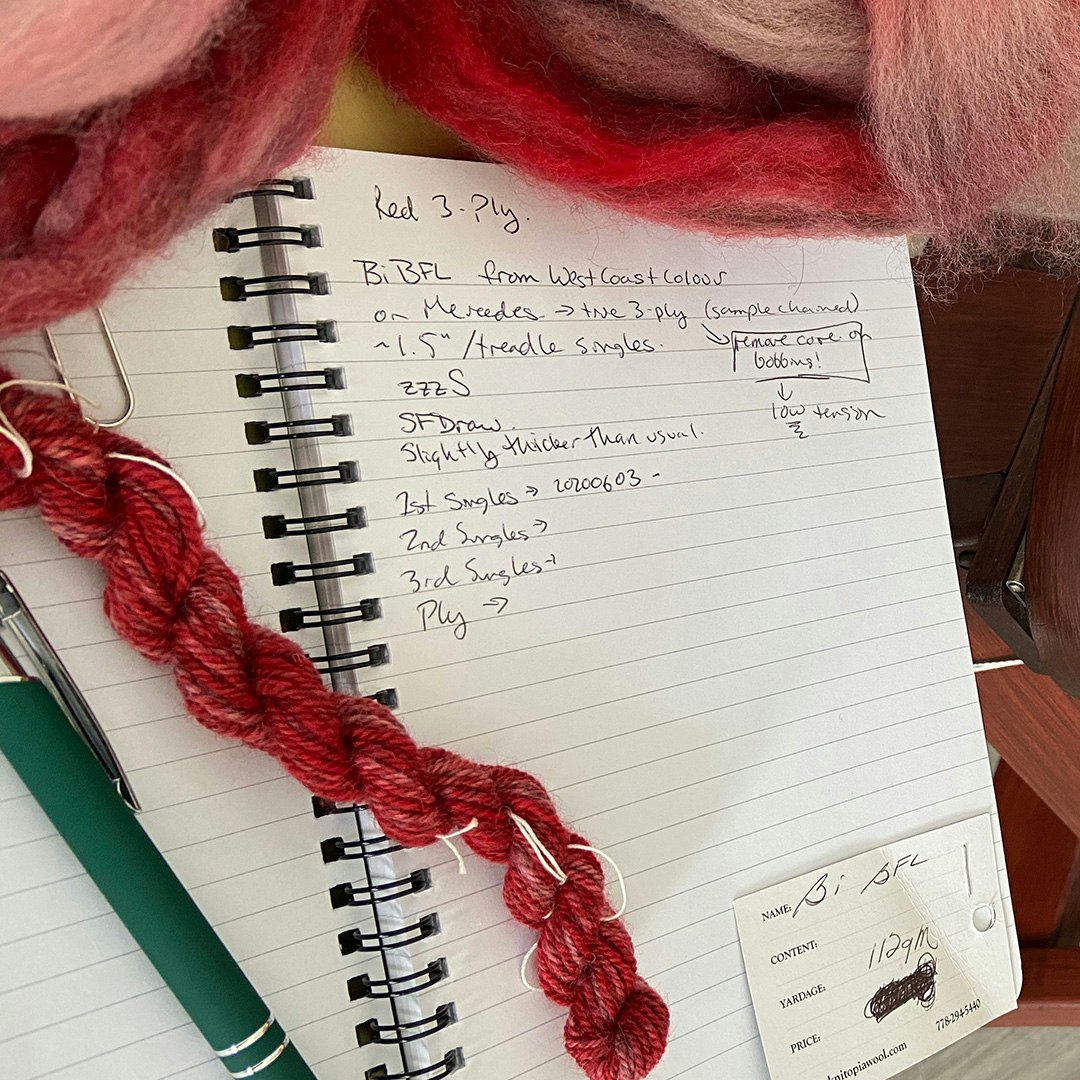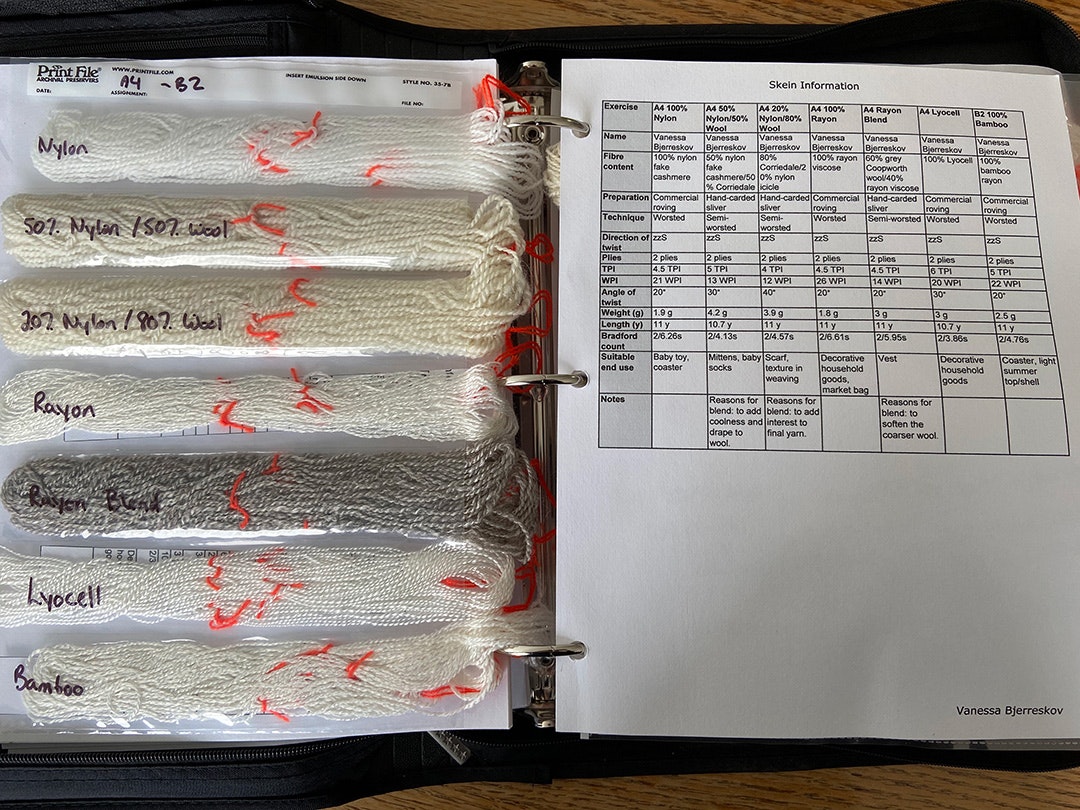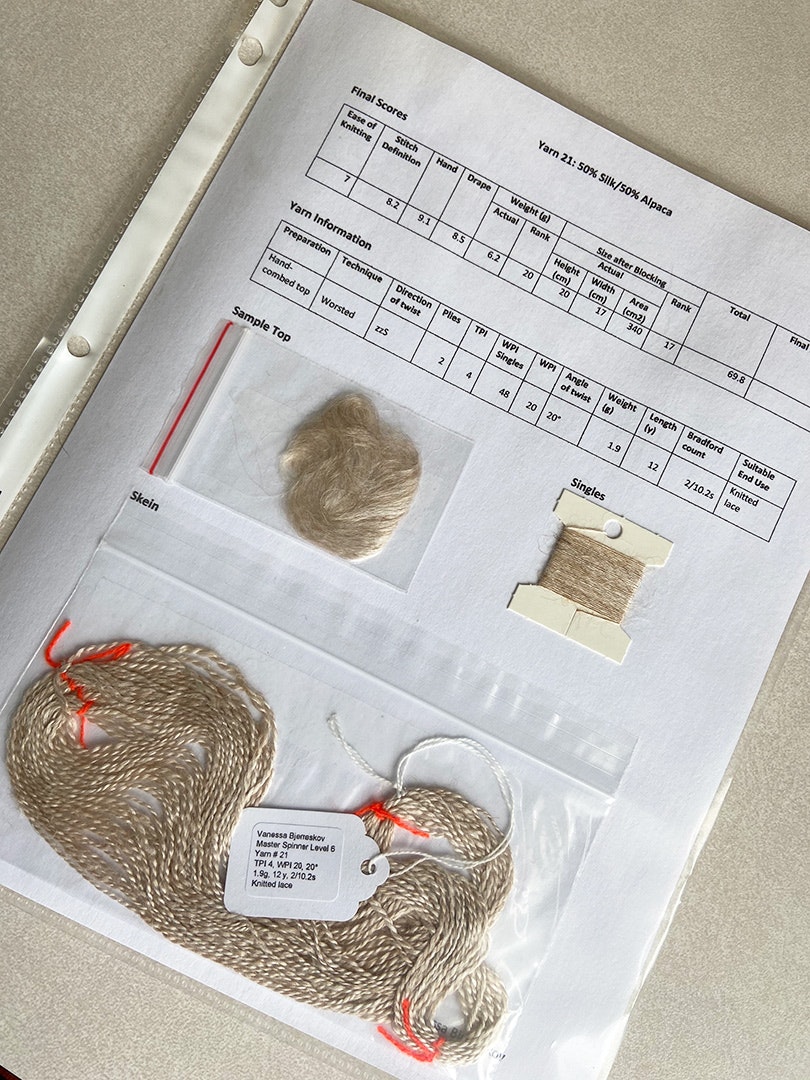The other day, I pulled an unlabeled skein out of my stash. I distinctly remember about six years ago thinking that I would remember the fiber content, and yet here I was, wracking my brain. That’s why I now keep records.
Six years of study in the Olds College Master Spinner program taught me a lot about spinning but even more about maintaining good records. Keeping organized through all of the program’s workbook skeins helped me adjust my spinning when a skein didn’t quite work out (I’m looking at you, 12 twists per inch in Level 3!). Gradually, recording that level of detail made its way into my fun spinning because I realized how useful having all that information really is.
There are levels of record keeping (you really don’t need to calculate Bradford count for every skein). Good records will make it possible for you to know what you’ve spun and match it if necessary.
I keep records at three points in each skein’s journey from fiber to yarn: preparation stage, spinning stage, and yarn stage.

Keeping records during the spinning process helps Vanessa stay organized, provides a reminder in case she sets the project aside, and helps keep her on track across a larger project.
Preparation Stage
If I am spinning from a commercial preparation, this is as simple as taking the label and tucking it into a notebook. If I am doing my own preparation, I write down what I am preparing (fleece, commercial preparation, and percentages if blending), as well as the tool used, the number of passes, and how the fiber goes on the tool (i.e., if I am layering fibers on the drum carder, what goes first, about how much in each layer, and in what order). I also like to keep a sample of the unspun final preparation, just in case I need to match it later.

This example from Vanessa’s Level 5 Master Spinner workbook shows how she learned to keep records at Olds College. Maybe she was a bit meticulous about it, but if she wants to spin any of these yarns for a larger project, it’d be very easy to do so.
Spinning Stage
In the spinning stage, I write down my wheel setup, including ratio and starting brake tension; drafting technique; twist direction; draft or make length in singles and ply; number of treadles per make in singles and ply; and ply technique. I sometimes add singles grist or a sample of singles, twists per inch measured by a ply-back sample, which wheel I am using, and empty bobbin weight; these pieces help me take up a project again if I have to put it aside. I also keep notes on yarn construction if it is complex.

When running an experiment, such as this selection from Vanessa’s Master Spinner Level 6 in-depth study, or sampling for a project, good record keeping helps her compare and contrast yarns and allows her to re-create the yarn in quantity.
Yarn Stage
Before the spun yarn goes in my stash, I make a printed copy of all the above information on a sheet of paper and place it in a plastic sleeve in a notebook. On the sheet, I include finishing technique and yarn measurements, such as yardage, skein weight, wraps per inch, twists per inch, number of plies, twist direction, and angle of twist. This is attached to the skein.
My format may not work for you, but I encourage everyone to find a comfortable way to record some information about each skein. It doesn’t have to be pretty as long as it makes sense to you, and it will definitely help you later!
Vanessa Bjerreskov has been working with fiber since she was a child, starting with crochet and cross-stitch and then progressing to knitting, and finally, to spinning. She is a 2017 graduate of the Master Spinner Program at Olds College in Alberta, Canada. She lives on the Sunshine Coast of British Columbia, Canada, and is the host of the biweekly fiber-arts podcast By the Fibreside. Visit her website at www.bythefibreside.com or follow her on Instagram at @sparqness.

